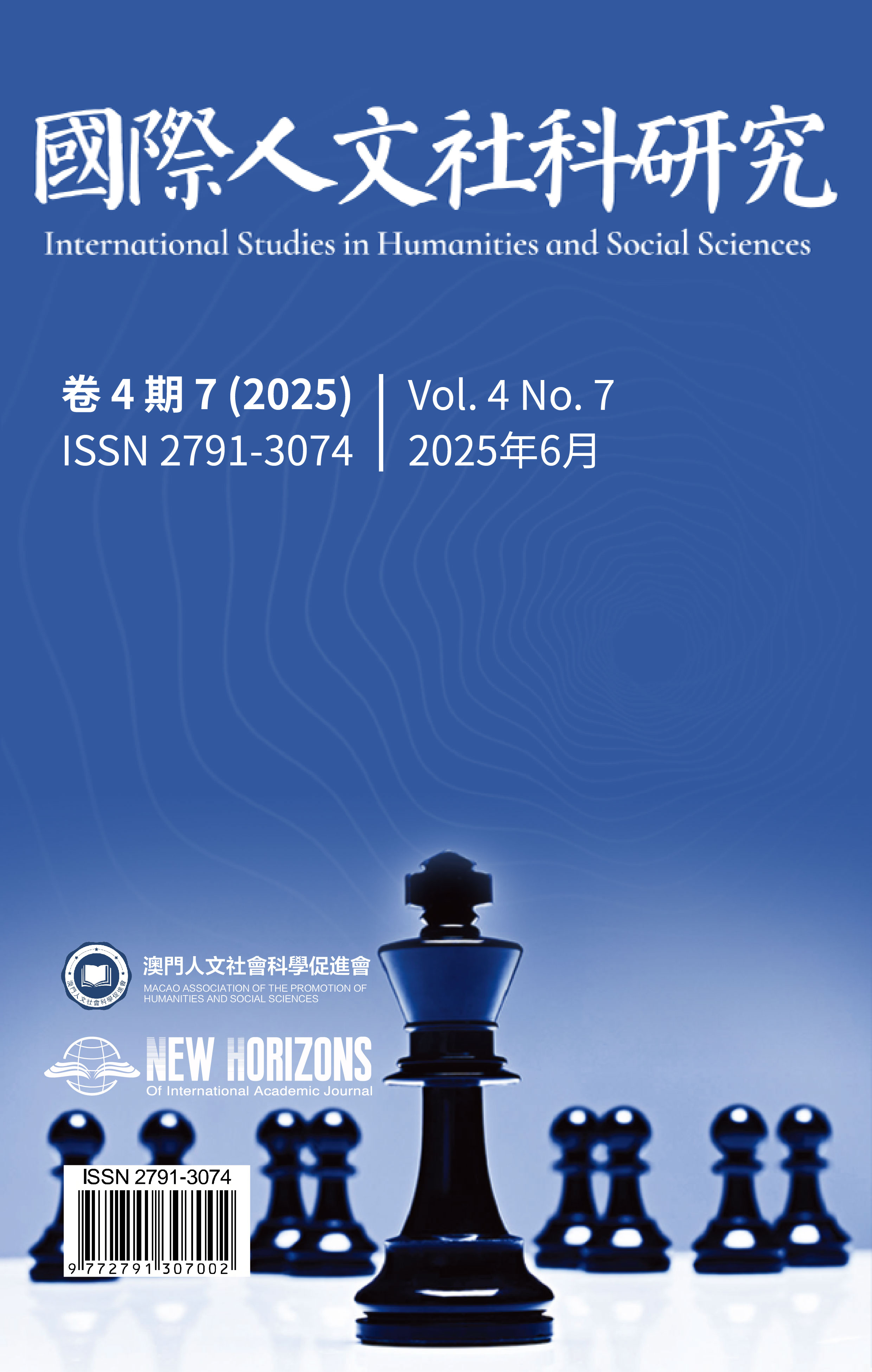數字人文視角下AI虛擬人促進傳統文化交互傳播的機制及效果研究 ——以虛擬人“令顏歡"為例
DOI:
https://doi.org/10.63944/1w753q72关键词:
虛擬人;數字人文;文化數位化;傳統文化傳播;受眾摘要
本研究從數字人文視角出發,以 AI 虛擬數字人“令顏歡”為研究對象,探討虛擬數字人是如何促進傳統文化實現交互傳播的。研究採用案例分析與內容分析方法,剖析 AI虛擬數字人“令顏歡”在抖音平臺上呈現的傳統文化符號、符號所生產的意義以及強化受眾情感認同的方式,闡述文化數據處理與分析、文化呈現與傳播創新兩個方面的實踐路徑,進而總結虛擬數字人在文化產業服務中的作用機制及傳播效能。研究結果表明,虛擬數字人運用 3D 建模與虛擬現實等數字技術,從形象設計和內容創作兩方面對傳統文化進行符號化解構與數位化闡釋,增強文化符號的可理解性; AI 賦能的數字交互設計、建立粉絲社群等形式促進受眾與文化符號的交互,成為文化實現數位化傳播的新途徑;通過在社交媒體平臺(抖音)上發佈視頻內容、與其他機構合作、以及發起專場直播等形式完成了促進受眾接受、認同相關文化的傳播機制,突破了以往相似類型虛擬人多在文博館等線下場景使用的傳統局限與時空限制,將應用拓展至更廣闊多元的領域。
参考文献
[1]. 安暉、閔傑(2022)。AI 虛擬人:這麼近、那麼遠。《科技與金融》,11,6-8。
[2]. 蔡子菡(2024)。媒介環境學視域下虛擬人代言人的形象建構和受眾認同(碩士論文)。重慶工商大學。
[3]. 程思琪、喻國明、楊嘉儀等(2022)。虛擬數字人:一種體驗性媒介——試析虛擬數 字 人 的 連 接 機 制 與 媒 介 屬 性。《 新 聞 界 》,7,12-23。doi:10.15897/j.cnki.cn51-1046/g2.2022.07.003
[4]. 鄧章瑜(2023)。數字時代如何創新文化傳播——以《中國日報》虛擬員工“元曦”為例。《傳媒評論》,6,75-77。
[5]. 胡榮(1989)。符號互動論的方法論意義。《社會學研究》,1,98-104。doi:10.19934/j.cnki.shxyj.1989.01.015
[6]. 黃曉京(1984)。符號互動理論——庫利、米德、布魯默。《國外社會科學》,12,56-59。
[7]. 李雪慧、趙宇翔、張軒慧等(2024)。公共文化服務場景下虛擬數字人的角色畫像 與 示 能 性 設 計。《 圖 書 館 論 壇 》,1-11。取自 http://kns.cnki.net/kcms/detail/44.1306.g2.20240821.1305.002.html DOI: https://doi.org/10.54254/3049-7825/2/2024016
[8]. 繆明希(2021)。網絡自制節目中的符號互動與形象創造——以《奇葩說》為例。《傳媒論壇》,20,46-48。
[9]. 唐紅(2018)。論網絡空間中的符號生產與自我身份建構的可能。《廣告大觀(理論版)》,2,76-80。
[10]. 王曉昱(2023)。符號互動論視角下虛擬人博主的交互性研究(碩士論文)。上海師範大學。doi:10.27312/d.cnki.gshsu.2023.001298
[11]. 謝處中、霍少達(2023)。數字虛擬人技術在數字博物館領域的應用。《時代報告(奔流)》,5,110-112。 DOI: https://doi.org/10.33142/fme.v5i5.14118
[12]. 姚蓉、張偉豪(2019)。符號互動論下的“視頻博客”研究分析。《石家莊鐵道大學學報(社會科學版)》,4,64-67。
[13]. 喻國明、張珂嘉(2021)。重識主播:試論媒介化視域下主播符號內涵與影響力觸達。《中國出版》,11,11-18。
[14]. 喻國明、楊名宜(2020)。虛擬人:一種自帶關係屬性的新型傳播媒介。《新聞與寫作》,10,68-73。
[15]. 占琦(2022)。元宇宙虛擬人的數字記憶與文化表徵。《聲屏世界》,14,9-11。
[16]. 甄慧(2024)。國風虛擬數字人短視頻的符號呈現和意義生產(碩士論文)。武漢體育學院。doi:10.27384/d.cnki.gwhtc.2024.000384
[17]. 朱嘉(2022)。基於中華武學文化傳播的增強現實交互應用設計(碩士論文)。南京信息工程大學。
[18]. 喬福強、吳志文、李夢霞(2023)。屏幕後的陪伴:互聯網環境下准社會關係的研究進展( 綜 述 )。《 中 國 健 康 心 理 學 雜 誌 》,31(09),1394-1399。doi:10.13342/j.cnki.cjhp.2023.09.021
[19]. Gopal, A., & Prasad, P. (2000). Understanding GDSS in symbolic context: Shifting the focus from technology to interaction. MIS Quarterly, 509-546. DOI: https://doi.org/10.2307/3250972
[20]. Machidon, O. M., Duguleana, M., & Carrozzino, M. (2018). Virtual humans in cultural heritage ICT applications: A review. Journal of Cultural Heritage, 33, 249-260. DOI: https://doi.org/10.1016/j.culher.2018.01.007
[21]. Pelau, C., Dabija, D. C., & Ene, I. (2021). What makes an AI device human-like? The role of interaction quality, empathy and perceived psychological anthropomorphic characteristics inthe acceptance of artificial intelligence in the service industry. Computers in Human Behavior, 122, 106855. DOI: https://doi.org/10.1016/j.chb.2021.106855
[22]. Rajat, R., & Naidoo, V. (2021). Enhancing chatbot effectiveness: The role of anthropomorphic conversational styles and time orientation. Journal of Business Research, 126, 23-34. DOI: https://doi.org/10.1016/j.jbusres.2020.12.051
[23]. Scheff, T. J. (2005). Looking ‐ Glass self: Goffman as symbolic interactionist. Symbolic Interaction, 28(2), 147-166. DOI: https://doi.org/10.1525/si.2005.28.2.147
[24]. Yu, J., Dickinger, A., So, K. K. F., et al. (2024). Artificial intelligence-generated virtual influencer: Examining the effects of emotional display on user engagement. Journal of Retailing and Consumer Services, 76, 103560. DOI: https://doi.org/10.1016/j.jretconser.2023.103560
[25]. 中國青年網(2023 年 4 月 4 日)。國風虛擬人令顏歡“復刻”《漢書》經典場景讓傳統文化與青年人更親近。取自 https://news.qq.com/rain/a/20230404A04L8400
下载量
已出版
期次
栏目
许可证
版权所有 (c) 2025 國際人文社科研究

本作品采用知识共享署名 4.0 国际许可协议授权。
版权所有 (c) 2025 國際人文社科研究
本作品采用知识共享署名 4.0 国际许可协议授权。









